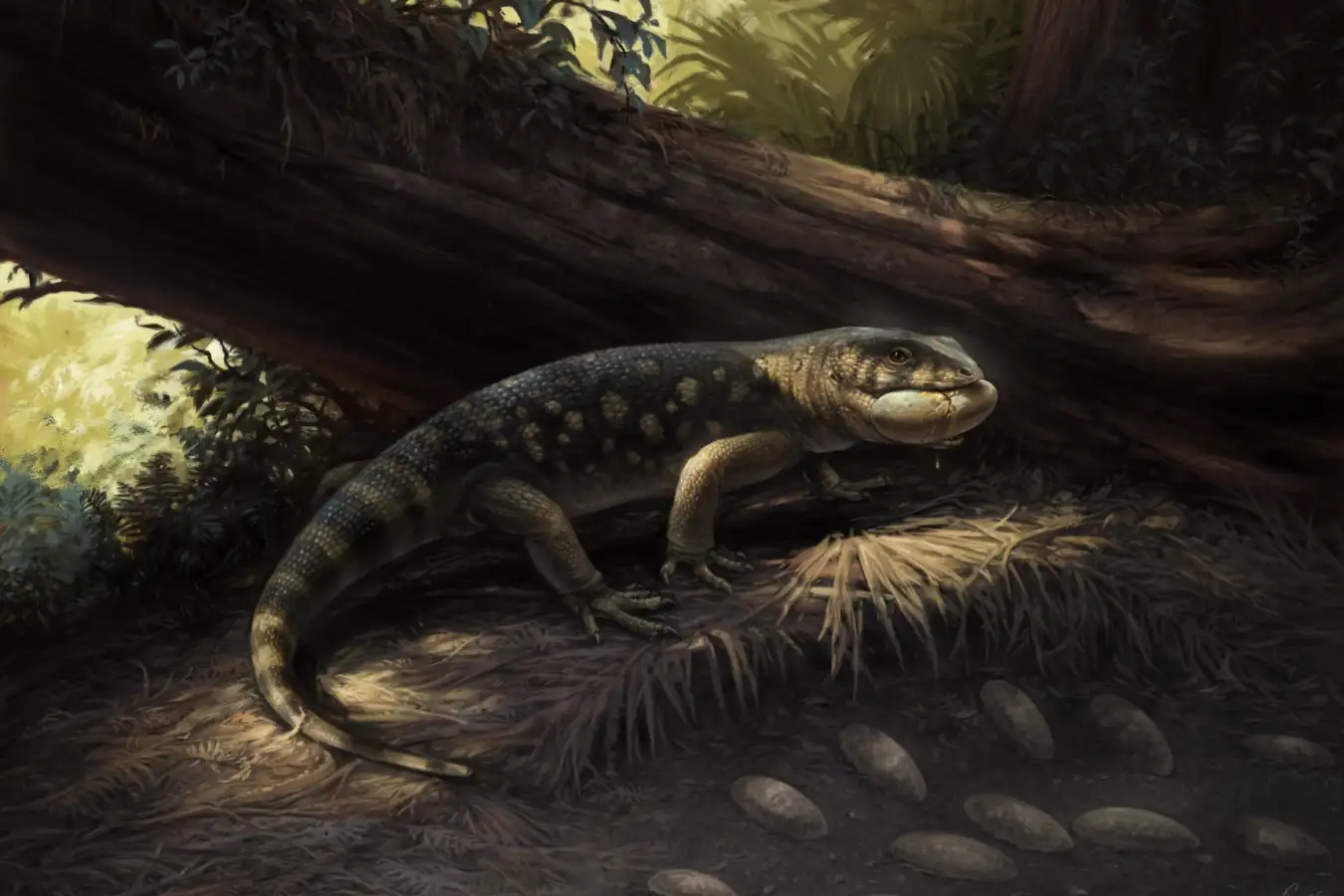
Ancient monstersaur had ‘goblin-like’ teeth and sheddable tail
How did your country report this? Share your view in the comments.
Diverging Reports Breakdown
Ancient monstersaur had ‘goblin-like’ teeth and sheddable tail
Fossil was found 20 years ago in Utah by Joseph Sertich at the Smithsonian Tropical Research Institute, who originally assumed it to be a known prehistoric lizard. The species is a monstersaur – a member of a group of reptiles that lived during the Late Cretaceous Epoch. Small mammals, frogs, snakes, insects and ‘basically anything that isn’t a plant’ would have been on B. amondol’s menu, according to the researchers, who reckon it would have “slurped up” dinosaur eggs. They also found evidence that it could shed its tail when injured, making it the oldest known example of this anti-predator strategy in monstersaurs.
Artistic reconstruction of Bolg amondol Cullen Townsend
An extinct monstersaur discovered in North America is shedding new light on life in the area around 75 million years ago.
The creature looks “like a goblin that sprang from the rocks”, says Hank Woolley at the Natural History Museum of Los Angeles County. The species is a monstersaur – a member of a group of reptiles that lived during the Late Cretaceous Epoch. It was “probably 3 or 4 feet, tip to tail”, according to Woolley. “I think you’d want to avoid it.”
Advertisement
Woolley named the species Bolg amondol. The first part of the name honours a Lord of the Rings character. The second part — invented from the fictional language Elvish — is a nod to the dermal armour on its skull, a bony trait shared by its relative, the modern-day Gila monster (Heloderma suspectum).
The uniquely well-preserved fossil was found 20 years ago in Utah by Joseph Sertich at the Smithsonian Tropical Research Institute, who originally assumed it to be a known prehistoric lizard. He recalls spotting “a bunch of scattered bones down a low, flat, sandy area”, including parts of the skull, vertebral column, jawbone and hip bone.
Sertich suggested Woolley visit the fossils in a museum in 2022, which led them to the discovery that B. amondol is a type of extinct lizard called a monstersaur. They also found evidence that it could shed its tail when injured, making it the oldest known example of this anti-predator strategy – which is used by some modern lizards – in monstersaurs.
Bones belonging to Bolg amondol Natural History Museum of Utah/Bureau of Land Management
Small mammals, frogs, snakes, insects and “basically anything that isn’t a plant” would have been on B. amondol’s menu, according to the researchers, who reckon it would have “slurped up” dinosaur eggs. Their “kind of swampy, pretty hot and humid ecosystem” would have been similar to the modern US Gulf Coast – much unlike Utah’s desert environment today.
Randall Nydam at Midwestern University in Illinois, who was not involved in the work, thinks this is a cautionary tale, pondering the fragility of such “very scary monsters” of the past and present. “We also have to appreciate that they’re gone, and they’re gone because their environment changed.”
Following B. amondol’s reveal, Sertich hopes people expand their perception of monstersaurs. “Any picture of the primeval tropical forests of North America should include nightmarish, dinosaur-hunting lizards pushing through the undergrowth and climbing through the trees,” he says.
